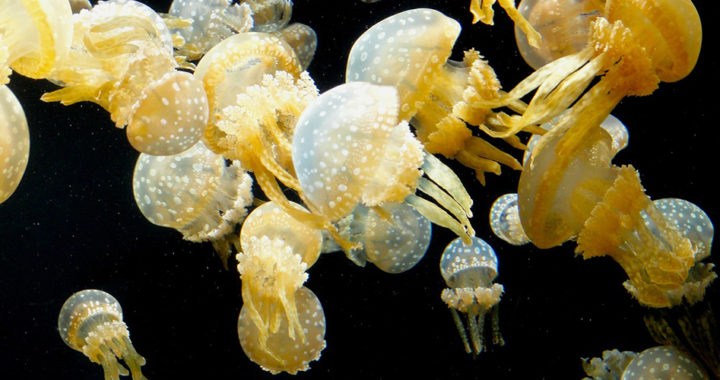Not all jellies are the same. Consider the difference between true jellyfish and box jellyfish as an example. As a backgrounder, both are similar because they belong to the subphylum Medusozoa and phylum Cnidaria under the kingdom Animalia. In addition, both are distinguishable for undergoing a medusa phase in their life cycle in which they develop an umbrella-like body structure to mark their growth into adulthood.
Aside from their gelatinous appearance, both species are characterized by having umbrella-shaped bells and trailing tentacles. They capture their prey using their tentacles that contain stinging cells called nematocysts. Once latched onto a prey, the nematocyst-covered tentacles release paralyzing and in some cases, fatal toxins.
Scyphozoa vs. Cubozoa: The Difference Between True Jellyfish and Box Jellyfish
The true jellyfish is a collective term for different species under the Scyphozoa class while the box jellyfish includes all species under the Cubozoa class. Although they may generally appear the same because of their medusa and tentacles, these two classes of species have notable differences.
A considerable difference is the appearance of their bells or medusa. Different species of true jellyfish have differently-shaped medusa. Some even have elaborated designs. On the other hand, box jellyfish species are very distinguishable for having a box-shape medusa. When seen in their cross-section, their medusa appears to be square, hence, the word “box” in their name.
Furthermore, between the two, the box jellyfish has earned a reputation for being one of the deadliest sea creatures and animals in the world. Reported encounters with humans resulted in either serious injuries or fatalities. Of course, it is worth mentioning that although not all box jellyfish species are deadly, there are few species that produce highly potent venom that outclasses the toxins produced by true jellyfish.
In consideration of deadly Cubozoan species, what separates them from Scyphozoans is that they use their venom both to haunt their prey and significantly impair or kill their predators. Hence, this is the reason why their venom can kill creatures as big as humans. The less potent toxins produced by true jellyfish species are usually not enough to cause severe harm to large creatures although they are still used to ward off predators.
Another difference between true jellyfish species and box jellyfish species is that the latter actively hunts its prey. Take note that most Scyphozoans merely drift in water and wait for their pray while some only feed on planktons using their tentacles. On the other hand, Cubozoans are capable of achieving speeds of up to 2 meters per second. Mobility is also a notable difference between Cubozoans and Scyphozoans.
What makes box jellyfish species active hunters of their prey apart from their better mobility is that they have true eyes. Unlike true jellyfish species that do not have any organs for visual sensing, the box jellyfish have four sets of six eyes or a total of 24 eyes complete with retinas, corneas, and lenses. To be more specific, they have four specialized eyes used for seeing specific points of light and forming images while the remaining 20 eyes are used for distinguishing between dark and light.
Nevertheless, it is also worth mentioning that the term “jellyfish” or “sea jellies” is an informal and common name given to different types and classes of species under the subphylum Medusozoa. Within the subphylum are other jellies such as the stalked jellyfish or Staurozoa and small jellyfish or Hydrozoa. All of these animals develop umbrella-shaped bodies once they reach their medusa phase.

